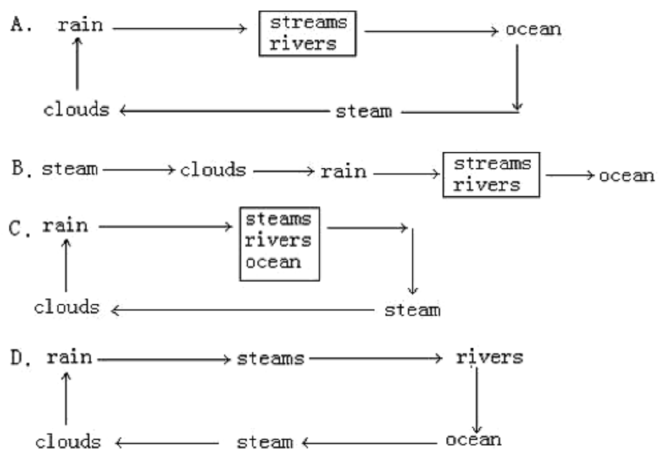阅读理解。
Smoking in indoor public places including public working places, public transport vehicles and some
other special outdoor working places has been banned (禁止) in China since January 2011. Let's look at the
following advantages of banning smoking.
First, banning smoking will not only help in saving smokers from health problems and diseases, but will
also be good for passive (被动) smokers. When the smoker is smoking in a restaurant, the people around
him are sure to breathe in the smoke and suffer from the diseases an active smoker gets. If smoking is banned,
spread of these diseases can be controlled.
Next, banning smoking will put stress on smokers to give up. Since a smoker is prevented from smoking,
he will learn how to live without smoking for long hours. When a smoker doesn't smell or see anybody around
him smoking, it might reduce his wish to smoke too. As a result, people have to give up smoking.
Smoking in public places influences non-smokers to start smoking, especially adolescents. When teens
see people around them smoking, they will follow them easily. Thus the number of teen smokers will increase.
Also asthma (哮喘) and other problems are often seen in children living around smokers. So if it is banned, these places will become safe for children and teenagers.
Looking from the economic point of view, smoking should be banned to increase work productivity (生产率). Employees (雇员) who smoke usually take breaks to smoke while working. So the number of hours they
put in their work is smaller.
If you see from the environment point of view, smoking should be banned. Smoking causes air pollution.
If it is banned, it will help keep the environment from getting worse.
1. _______ doesn't belong to a non-smoking place.
A. A field
B. A hospital
C. A library
D. A restaurant
2. The second paragraph mainly wants to tell us _______.
A. banning smoking is good for restaurants
B. banning smoking is good for non-smokers
C. banning smoking is good for spread of diseases
D. banning smoking is good for active smokers and passive smokers
3. How many advantages of banning smoking are mentioned in this passage?
A. Two.
B. Four.
C. Five.
D. Six.
4. According to the text, the underlined word "adolescents" means _______.
A. men
B. women
C. adults
D. teenagers
5. Which of the following statements in NOT true?
A. If smoking is banned, work productivity will increase.
B. If smoking is banned, the number of teen smokers will be larger.
C. If smoking is banned, it will make the environment become better.
D. If smoking is banned, smokers will learn how to live without smoking.

 om taking drinks with a lot of caffeine in them.
om taking drinks with a lot of caffeine in them.